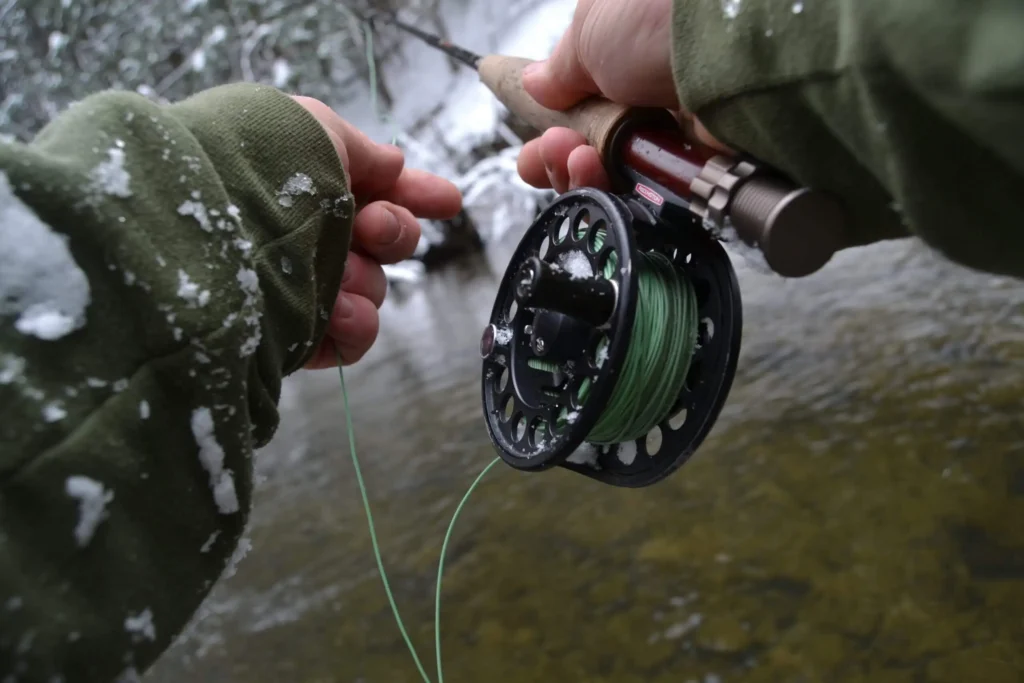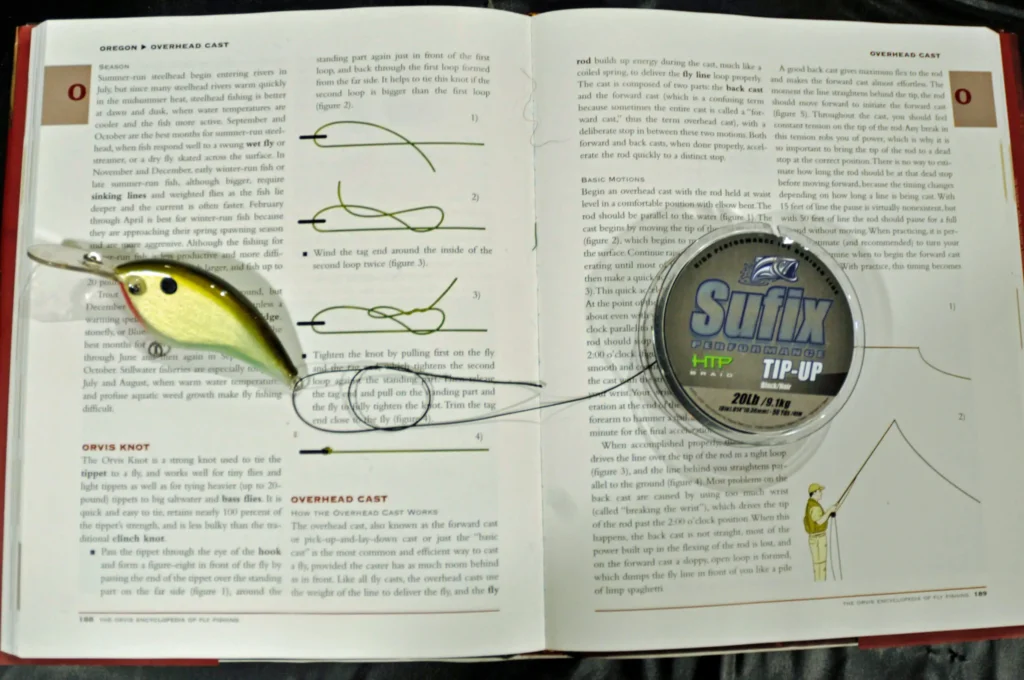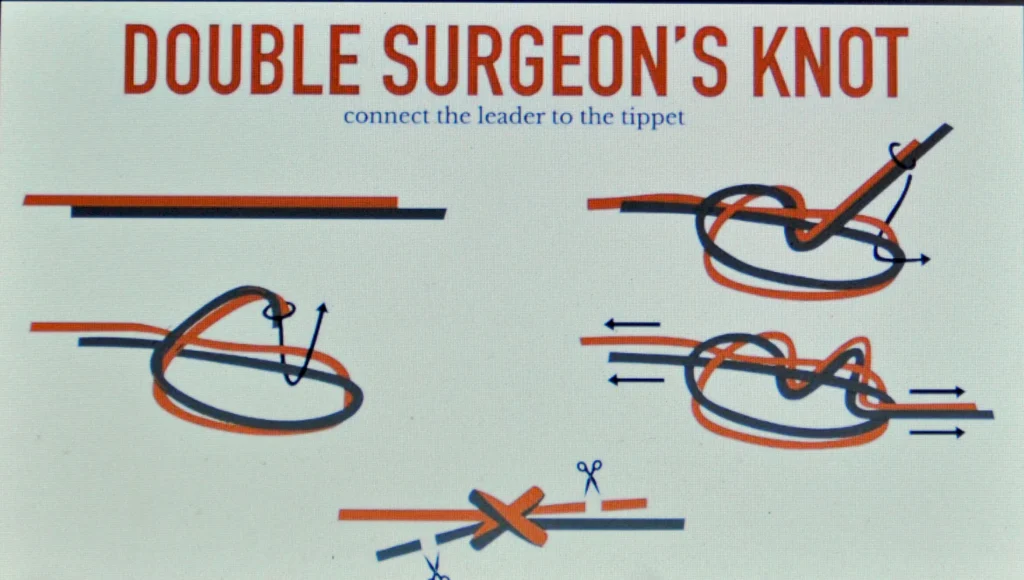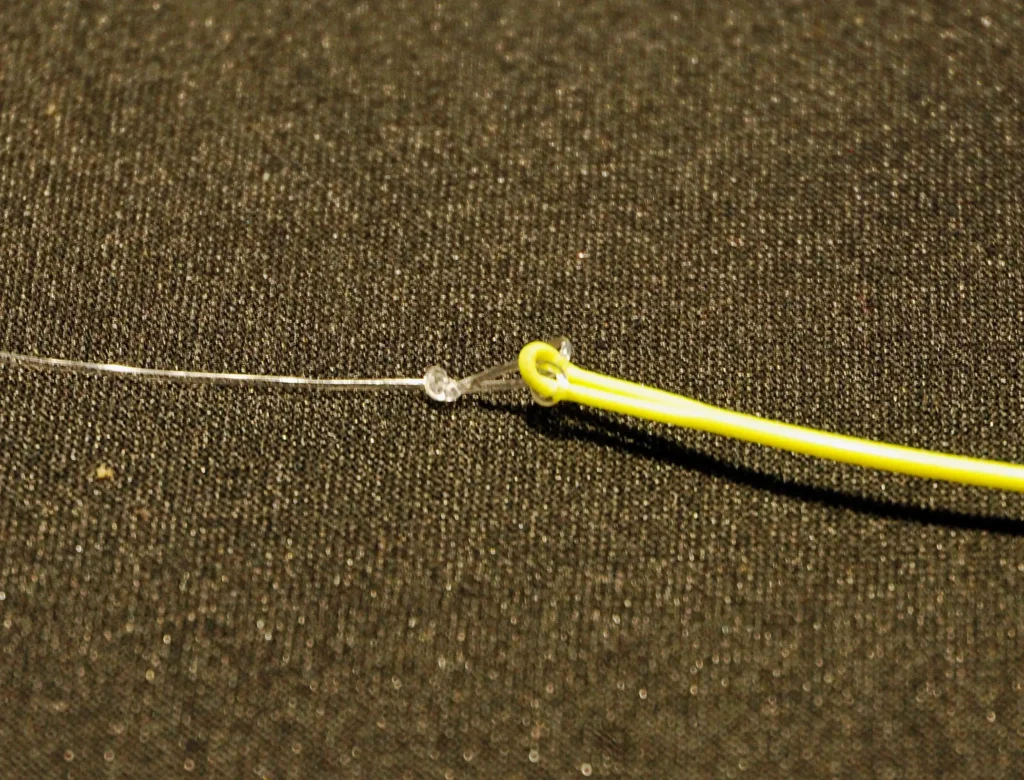Knots to Know for Cold Weather Fly Fishing

The overhead sun was high and bright during one of my earliest, winter steelhead adventures with a fly rod. I grew up in the snowbelt area near Lake Erie, so that big, glowing ball in the sky didn’t fool me. I dressed appropriately for the event, including the addition of mittens with a flap that folded over the backs of my hands. The flaps, when held back by attached Velcro strips, allowed my fingertips to protrude.
Eventually, a large steelie accepted my sucker spawn imitation and the expected battle ensued. Then it happened. I committed a rookie mistake by trying to net the fish, prematurely, and I had that fish half in the net when it broke free, taking my fly and half of my tippet with it. Making matters worse, I instinctively and quickly thrust the net, and my hand, into the frigid water in a desperate attempt to secure the fish. My right hand and glove were soaked by icy water.
That’s when I recognized a problem! My fingers were numb, and I could not feel the tippet line I needed to add to the leader. If you have never tried to tie two pieces of thin fishing line together when your fingers have lost dexterity, you may not appreciate the challenge. The last thing I wanted to do was leave my bare fingers exposed to the elements longer than they needed to be. Tying a complicated knot was the last thing I wanted to do, but I didn’t know how to tie simple, quick knots that I could trust to hold and would move freely through fishing rod guides.
The fact is that even on the coldest days, an angler will eventually need to bear their fingers to tie knots. Expelling large amounts of warming breath across our fingers provides temporary warmth that is never adequate. The best remedy is to know how to tie several, simple, strong knots and tie them quickly even when you’ve lost finger dexterity.
I do not claim to be the most knowledgeable or prolific knot-tyer on the planet. Tying a new knot does not come easy to me, so I must practice tying it repeatedly. Here are my tips for learning to tie unfamiliar knots.
Do not attempt tying an unfamiliar knot while using a size 20 hook and 7X tippet line. You are likely to get frustrated and give up! Instead, stage a large crankbait lure (without treble hooks), and a spool of thick, black line normally used for ice-fishing with tip-ups, next to a sketch of the knot you are trying to learn. Stage the items where you will walk by them often, and each time you walk past the items, tie the knot. If you tie that same knot enough times over days or weeks, it will become second nature to tie it when you must. By spreading the lesson over days or weeks, the experience will be embedded in your brain better than by tying it several dozen times during a single sitting, especially if you will not use your new knowledge on the stream until days or weeks later.
Here’s a bad habit of mine that you should avoid: I tend to glance at sketches and “think” I see it perfectly. If provided, read each step closely and be sure the practice line perfectly matches the sketch at each step. This is especially critical the first few times you tie the knot. It is more difficult to forget the incorrect way to tie a knot than it is to learn to tie it perfectly in the first place. Let me write that again! It is more difficult to forget how to tie a knot incorrectly than it is to tie it correctly in the first place. Don’t worry about how fast you tie the knot. Speed will come with repetition.
These are my three favorite cold-weather knots, and they need not be your three favorites. If they are strong knots that you can tie quickly, they have earned your respect. Two of the most obvious knots missing from my list are the blood knot and the nail knot. I struggle to tie them even when the weather is warm, so they are not my personal preference for fishing in cold weather, but if you can tie them well, they work just fine, too. If you can tie a “good” knot and tie it “quickly,” it’s a good cold weather knot.

The Orvis Knot
This has become my go-to knot to secure a hook to a tippet. I came across the Orvis knot about a dozen years ago, while perusing the pages of The Orvis Encyclopedia of Fly Fishing. Before I discovered this simple, secure knot, I attached hooks to my line with a more cumbersome knot. The Orvis knot is not only faster to tie, but it provides less mass at the eyelet, which is a big deal when using the tiniest flies to trick a fish. Therefore, as you might imagine, I use it all the time.
The Double Surgeon's Knot
I once assumed the double surgeon’s knot was complicated. I scarcely attempted to learn to tie this knot which is commonly used to attach two lines, such as when adding a tippet to a leader. My earliest attempts to tie the double surgeon’s knot were unwarranted chaos, and all because I was being too frugal. I foolishly tried to conserve every inch of material. I learned the double surgeon’s knot is incredibly simple to tie if a longer length of tippet is attached to a longer leader tag.
To tie a double surgeon’s knot, begin by overlapping the ends of the two lines you want to join. Form a simple overhand knot by passing one end of the line over the other and then through the loop. Repeat this process to create a second overhand knot, effectively tying two overhand knots in sequence. Ensure the knots are snug against each other but leave enough slack to allow movement. Finally, tighten the knot by pulling both standing lines in opposite directions until it cinches down securely. The double surgeon’s knot is commonly used in surgery for suturing, but it’s a good knot to know for cold weather fly fishing, too!

The Surgeon’s Loop (or Manufactured Loop)

Anyone can learn to tie a surgeon’s loop at the end of the fly line and duplicate the process with their leader. Pushing the leader’s loop barely through the fly line’s loop and then threading the leader’s line through the loop couldn’t be any simpler, and that would certainly lock it to the fly line. Most fly lines and leaders can be purchased with these very helpful loops already in place. However, if your lines and leaders don’t have these loops, the double surgeon’s loop is a good one to know how to tie.
To tie a surgeon’s loop, start by forming a single overhand knot at the desired location, leaving a loop at the end of the line. Pass the tag end through the loop a second time, creating a double loop. Hold both loops and the tag end together, then tighten the knot carefully to avoid twists or tangles. Ensure the loops are of the desired size before fully tightening the knot. Moisten the knot and pull it tight to secure it.
Sometimes, the most challenging part of cold weather fly fishing is tying knots. Whether it’s changing flies, adding tippet, or tying on a whole new leader, these simple tasks get much harder to accomplish with frozen fingers that won’t move the way you want them to. But I hope some of the tips in this article will help you become more proficient at tying some of these simple knots that are perfect for fly fishing in cold weather.
Looking to take your fishing to the next level?
Book a day on the water where we can show you how to read the water, make better presentations, catch more fish, and enjoy time spent outdoors more than ever before.
Book Now!Did You Find This Article Helpful?
Stay up to date with the Dark Skies Fly Fishing monthly newsletter for free and receive the latest posts in fly fishing news, tricks, tips, and techniques, stream reports, as well as updates on new flies added to the Online Store and exclusive discounts!
Sign Up Now

Try a Jack’s Knot. Make sure it is tied the correct way. It is fast easy and strong and can be tied with no tag to trim. You do not need to hold the fly to tie it.